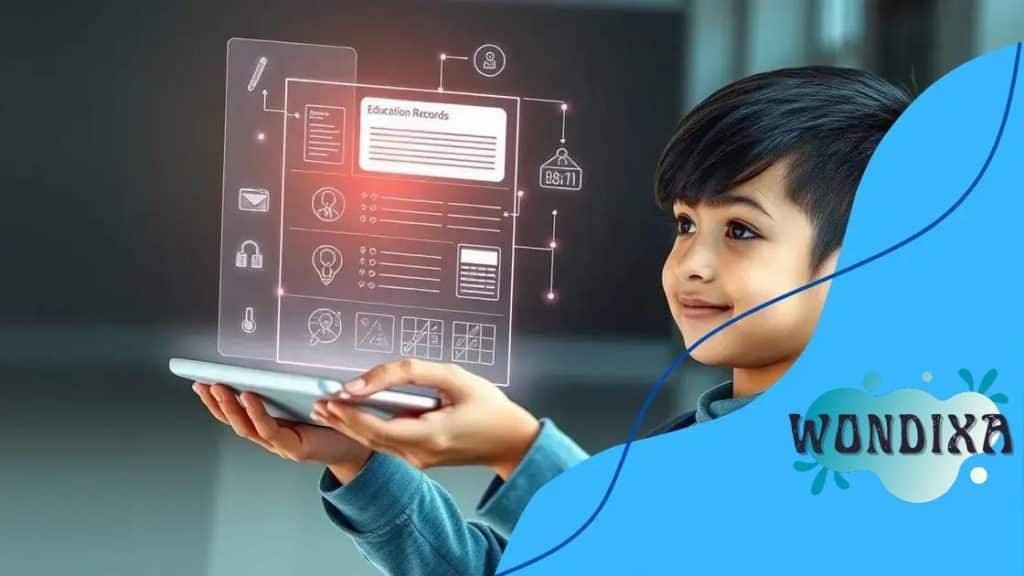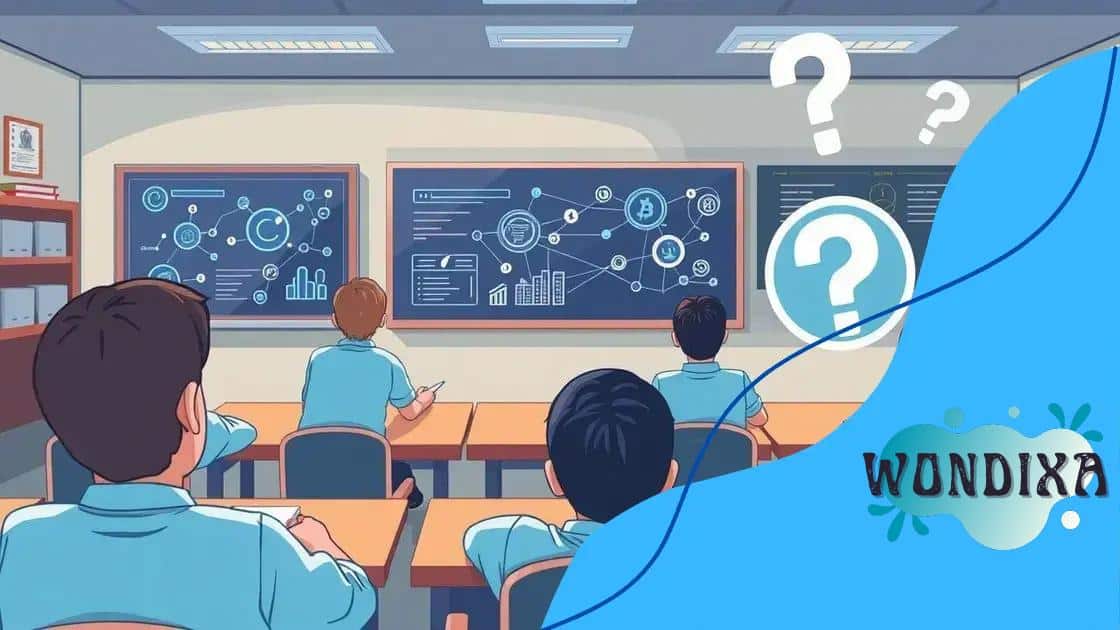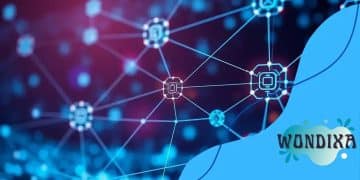Blockchain for secure student record keeping

Blockchain for secure student record keeping revolutionizes academic data management by providing tamper-proof, transparent, and easily accessible records, enhancing security and efficiency for educational institutions.
Blockchain for secure student record keeping is transforming how educational institutions manage records. Curious about how this technology can safeguard sensitive information? Let’s dive in.
Understanding blockchain technology
Understanding blockchain technology is crucial for comprehending its impact on various sectors, including education. By using a decentralized and secure method, blockchain ensures that data cannot be easily altered or tampered with. This means that records maintained on the blockchain are highly trusted, offering a better way to store sensitive information such as student records.
Inherent features of blockchain make it stand out:
Key Features of Blockchain
- Decentralization: Unlike traditional databases, blockchain operates on a peer-to-peer network, reducing dependency on a single authority.
- Transparency: All transactions are recorded on a public ledger, allowing for easy verification.
- Security: Advanced cryptographic techniques protect data from unauthorized access.
- Immutability: Once recorded, data cannot be changed, ensuring the integrity of student records.
The technology employs a complex yet efficient method of recording transactions through blocks that are linked together in a chain. When a new transaction occurs, it must be verified by the network before being added. This verification process adds a layer of security that traditional methods lack. Education institutions can greatly benefit from this technology by enhancing trust and reducing administrative burdens when managing student information.
Moreover, blockchain allows multiple stakeholders, including students, parents, and institutions, to access necessary records without compromising privacy. The ability to share information securely can streamline processes like admissions and transfers, making them easier for everyone involved.
Real-World Applications
Many universities are beginning to explore how blockchain can be applied in real-world scenarios. Here are a few:
- Issuing secure diplomas and transcripts.
- Tracking student attendance and performance.
- Establishing credentials and achievements.
Implementing this technology can be a game-changer for educational organizations. By ensuring the security and integrity of data, blockchain for secure student record keeping provides a reliable framework to manage critical information.
Benefits of blockchain for student records
Benefits of blockchain for student records are becoming increasingly clear as educational institutions seek more secure ways to manage data. This technology offers unique advantages that can improve efficiency and trust when it comes to handling sensitive student information.
One of the main benefits is security. Blockchain uses encryption to protect data, making it nearly impossible for unauthorized users to alter records. This means student transcripts and diplomas can be verified easily without risking fraud.
Increased Transparency
With blockchain, all transactions are recorded on a public ledger. This feature enhances transparency in reporting student achievements and credentials. Institutions can provide real-time access to student records, which makes the verification process smoother for employers and other educational bodies.
- Faster verification: Employers can quickly check a candidate’s qualifications.
- Access control: Students can manage who sees their records.
- Streamlined processes: Reduces paperwork and administrative burdens.
Another significant advantage is cost-effectiveness. By reducing the need for intermediary processes, such as physical record keeping and verification checks, schools can save money in administrative costs. This allows funds to be redirected towards essential educational services.
Moreover, blockchain enhances student mobility. As students transfer between institutions, they can easily share their records on a secure platform, ensuring that their academic history is preserved and accessible. This can lead to improved academic planning and better opportunities for students.
Future-Ready Solutions
The use of blockchain positions educational institutions as modern and technologically advanced. Embracing this technology not only sets schools apart but also prepares them for upcoming challenges in data management. As the demand for more efficient systems grows, adopting blockchain for secure student record keeping will become essential.
Challenges of implementing blockchain in education

Challenges of implementing blockchain in education present various hurdles that institutions must overcome to fully leverage this innovative technology. While blockchain holds great potential, it is essential to address the obstacles that may hinder its adoption smoothly.
One significant challenge is the technical complexity associated with blockchain systems. Many educational institutions lack the expertise to develop or maintain these systems. Training staff and educators to understand blockchain technology can be time-consuming and costly.
Resistance to Change
Another common issue is the resistance to change within the educational sector. Institutions are often slow to adopt new technologies due to the traditional practices and processes they have followed for years. Convincing stakeholders to embrace blockchain requires a shift in mindset, which can take time.
- Institutional inertia: Many organizations feel comfortable with their existing systems.
- Fear of the unknown: Uncertainty about new technology can cause hesitation.
- Need for a pilot program: Testing blockchain solutions might be necessary before full implementation.
Furthermore, integrating blockchain with existing systems can be challenging. Many schools use legacy systems that may not align well with blockchain technology. Adapting or replacing these systems can lead to significant expenses and logistical issues.
Privacy and security concerns also play a crucial role in the conversation. Even though blockchain is generally known for its security features, issues around data privacy still exist. Institutions must ensure that student data is protected adequately while using blockchain. Striking the right balance between transparency and privacy can be challenging.
Regulatory Compliance
Lastly, regulatory compliance poses another complication. Educational institutions must navigate various laws and regulations regarding data management. Ensuring that a blockchain-based system complies with these regulations requires careful planning and legal guidance.
Addressing these challenges is vital for educational institutions looking to implement blockchain technology successfully. By recognizing the barriers and developing strategies to overcome them, schools can unlock the benefits that blockchain has to offer.
Real-world examples of blockchain use
Real-world examples of blockchain use demonstrate the versatility and potential of this technology in various fields, including education. By looking at these examples, we can see how blockchain improves processes and enhances security.
One noteworthy application is in the area of credential verification. Many universities are beginning to use blockchain to issue diplomas and transcripts. This ensures that employers can easily verify the authenticity of a candidate’s educational background. Major institutions, such as MIT, have already adopted this approach, providing tamper-proof digital certificates.
Student Record Management
Another exciting example is the use of blockchain for student record management. In several pilot projects, schools have implemented blockchain systems to store and manage student data securely. This allows institutions to improve data accuracy while making it easier for students to share their records with other schools and employers.
- Easy access: Students can access their records anytime, anywhere.
- Data integrity: Ensures that records remain unaltered and trustworthy.
- Streamlined processes: Reduces the administrative burden on schools.
Additionally, organizations like the Swiss Federal Institute of Technology (ETH Zurich) utilize blockchain to register and verify academic qualifications. By providing a blockchain-based solution, the institution enhances the security of its academic credentials, further building trust with employers.
Enhancing Learning Experiences
Blockchain also finds application in enhancing learning experiences. Some educational platforms use the technology to create decentralized learning ecosystems where students can earn micro-credentials for completing specific tasks or courses. These credentials can be stored on the blockchain and easily shared with potential employers, showcasing a student’s skills and accomplishments.
Moreover, projects such as the Open University in the UK have explored blockchain for lifelong learning records. This allows learners to maintain a portfolio of their educational achievements throughout their lives, promoting continuous personal and professional development.
As blockchain technology continues to expand, these real-world examples illustrate its capability to transform education and other sectors significantly.
Future of blockchain in academic record management
Future of blockchain in academic record management looks promising as educational institutions increasingly recognize the value of this technology. With its ability to provide secure, transparent, and efficient systems, blockchain may revolutionize how schools manage student records.
One of the key areas where blockchain will make a significant impact is in data integrity. As the reliance on digital records grows, maintaining the accuracy and security of these records becomes essential. Blockchain offers a way to ensure that educational credentials are authentic and tamper-proof, increasing trust among employers and institutions alike.
Decentralized Learning Ecosystems
Another exciting possibility is the emergence of decentralized learning ecosystems. In these systems, all participants—students, educators, and employers—can access and manage records on a secure, shared platform. This accessibility enhances collaboration and supports lifelong learning journeys.
- Collaboration: Students can easily share achievements with potential employers.
- Customizable portfolios: Learners can create unique records of experiences and skills.
- Real-time updates: Changes to credentials can be reflected immediately.
As institutions shift towards competency-based education, blockchain can help track student progress in real-time. This adaptation allows personalized learning paths and ensures that students receive appropriate recognition for their skills and achievements.
Integration with Emerging Technologies
Furthermore, integrating blockchain with other technologies like artificial intelligence (AI) and the Internet of Things (IoT) may enhance academic record management. AI can analyze data on the blockchain to provide insights into student performance, while IoT devices can automate record-keeping processes.
Blockchain can also enable micro-credentialing. This practice allows educators to award students digital badges for completing small learning modules, which can be stored on the blockchain. Such micro-credentials foster a more diverse skillset among graduates, appealing to modern employers.
Overall, the future of blockchain in academic record management is about creating a more efficient, secure, and transparent system. By leveraging this technology, educational institutions align themselves with the demands of today’s digital world.
FAQ – Frequently Asked Questions about Blockchain in Academic Record Management
How does blockchain enhance the security of academic records?
Blockchain uses encryption and decentralization to secure academic records, making it nearly impossible for unauthorized changes or fraud.
What are micro-credentials and how can they benefit students?
Micro-credentials are digital badges awarded for completing specific learning tasks, helping students showcase their skills and achievements more effectively.
How can institutions integrate blockchain with existing systems?
Institutions can adopt blockchain gradually, starting with pilot programs that allow them to test the technology alongside existing systems.
What future advancements can we expect with blockchain in education?
Future advancements may include advanced integrations with AI and IoT for personalized learning experiences and better data insights.





